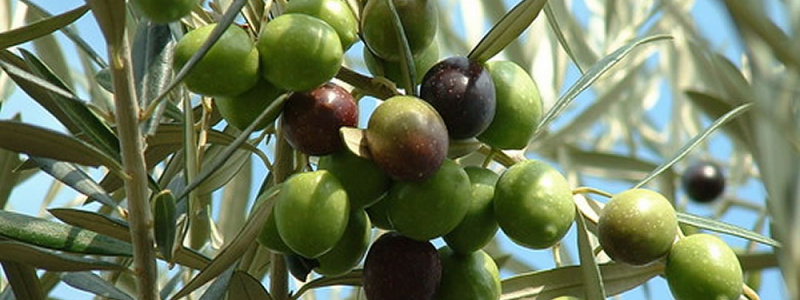Our summer guide to the small but mighty olive, and the wealth of types to choose from today
It’s hard to imagine that one-upon-a-time in the UK your choice of olives amounted to green or black, or that the only way for pioneers such as cookery writer Elizabeth David (who did so much to popularise Mediterranean cuisine in Britain during the latter half of the 20th century) to buy olive oil was from a pharmacy (where it was sold as a remedy for removing ear wax).
Back in the Mediterranean basin, olives (the small fruits that grow on the tree known botanically as Olea europaea) have been cultivated for at least 7000 years. Olives belong to a fruit group called drupes (or stone fruits) and, unlikely as it may seem, they’re related to cherries, peaches, pistachios and even mangoes.
A key staple of the super-healthy Mediterranean diet, olives are very high in vitamin E and other powerful antioxidants, and studies have shown that they are good for the heart and may protect against osteoporosis and cancer. As a country that doesn’t grow it’s own olives (although the steady increase in global temperature has allowed one UK grower to establish a commercial grove in Devon), we sometimes consider green and black olives as separate varieties, whereas a black olive is simply a green olive that has been left to fully ripen before picking.
The olive’s extreme natural bitterness, even when fully ripened, means that out of roughly 120 ‘table’ varieties cultivated (those with fruit that can be eaten as well as pressed for oil) only two can be eaten fresh. The rest are treated after picking using a whole number of different traditional methods, but all for one purpose; to reduce the levels of oleuropein and hydroxytyrosol, the compounds that cause the bitter taste but also give olives their pungency and unique flavour.
Commercial imperative
It’s also important to remember that ripe olives should never be fully black, but rather a deep shades of dark brown or purple. Those glossy coal-coloured olives so often found in supermarket tins and jars have become that shade thanks to the fast commercial process used to remove their bitterness. This involves steeping them in a solution of caustic soda, which quickly penetrates the olive’s skin to extract oleuropein. The olives are then churned in oxidised water to further speed up ripening. This part of the process is what turns the olives jet-black, but because this colour will soon fade to something less appetising it is fixed with the addition of ferrous gluconate.
This expedient method allows over three billion olives to be commercially produced each year. Unfortunately the artificially added iron compound also gives olives produced this way their unmistakable metallic flavour – an aftertaste that can’t even be disguised by marinating in oil and herbs.
Go for slow
Traditional methods of preserving and extracting bitterness from olives, are gentler, deliver subtler flavours, and are obviously far more time consuming. Traditionally, and to their benefit, green olives should be picked, gently handled to prevent bruising, then steeped in changes of cold water for a period of 10 days. The olives are then put in strong brine (salt water). Over the next three months they undergo a lactic ferment as the salt drives off the bacteria. They are then ready to eat, or for marinating in oil.
Dark olives picked ripe are also left in fresh water for 10 days, then matured in brine for nine months, they can also be dry-cured and salt-cured initially before being preserved in oil and seasoning, black olive preserved in this way are particularly prevalent in Morocco, Spain and Greece.
It’s also worth noting that commercial, ‘fast-preserved’ olives are either pasteurised (heated to 78C for five minutes) or sterilised (heated to 125C for 35 minutes). Tinned olives are invariably sterilised, a process which invariaby cooks the olives, softening and drying them out, and producing the standard, squishy pizza olive. You can tell a non-pasteurised or non-sterilised olive by the satisfying slightly crunch they deliver when you bite into them.
From Gordal to Manzanilla, at Maws we provide exceptional quality olives for all purposes and occasions - and in the second part of this blog we’ll look at some of the most interesting varieties now available here in the UK.
